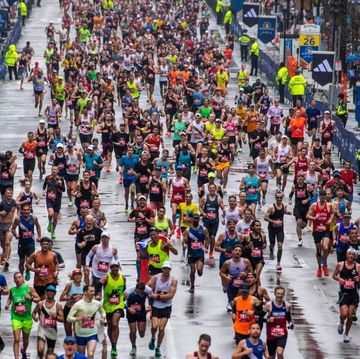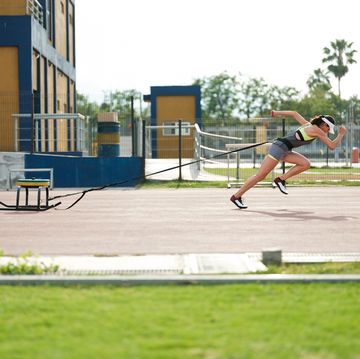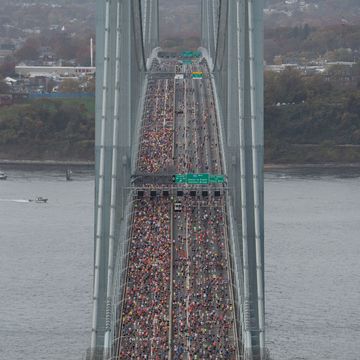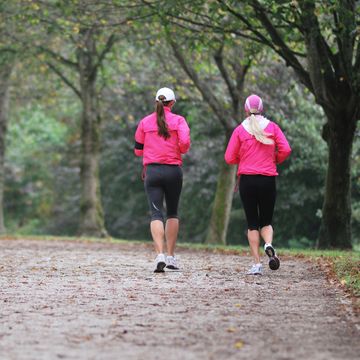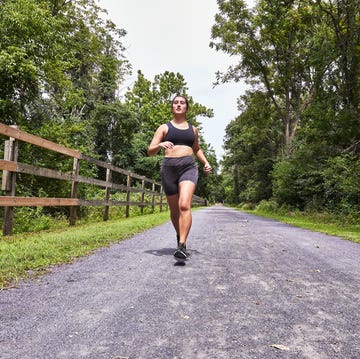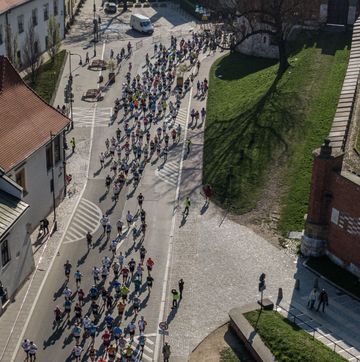The LaVern Gibson course offers spectators wide-open views of race action.
For nine of the last 11 years, runners and fans have descended on a rural swath of land in western Indiana for the NCAA Division I cross country championships. They pass billboards and banners welcoming them to "Cross Country Town, USA"--more commonly known as Terre Haute, a city 75 miles west of Indianapolis. They pour into parking lots that are surrounded by grazing cows and farmland and fill the rolling hills of the course with college colors.
The scene, which will unfold again this year on Nov. 23, is better than a group of cross-country-loving visionaries in Terre Haute could have imagined when they began designing the LaVern Gibson Championship Cross Country Course 18 years ago.
THE START
Before it was a cross country treasure, the 280-acre tract of land was a coal mine. And then a trash heap. When the landfill closed in 1987, the site sat vacant for 10 years as the landowners, the Gibson family, developed their next big idea.
LaVern Gibson, a businessman and local philanthropist, decided it would become a recreation facility and a cross country course for the people of the Wabash Valley. His grandson, Greg Gibson, was a successful runner at the Rose-Hulman Institute of Technology in Terre Haute in the '80s. The whole family loved the sport. LaVern, who died in 1993, left $300,000 in his will to a local club for the project.
Greg Gibson got to work on his grandfather's idea. He hired an athletic facility design firm to create the course, but the original design fell short. Weaving around soccer fields and tennis courts, it felt like a high school course to John McNichols, the Indiana State University men's cross country coach. Not exactly championship caliber.
"You know, I think we can do a whole lot better," McNichols, now in his 31st year of coaching, told Gibson.
Together, McNichols, Gibson, and Gibson's former coach, Bill Welch, began sketching a new design. They made three loops--an outside loop of 3,000 meters and two inside loops of 1,000 meters each. The straightaway at the start was 900 meters, long enough to give runners time to sort themselves out before the turn. The approach to the finish line stretches 400 meters.
"We discussed the fact that most cross country courses weren't really courses set aside for the sport; they were golf courses or parks," Gibson, now 51, says. "We decided that if we were going to build this course, we wanted it to be nice."
The men wanted a course that was spectator-friendly--a rarity in the sport. Their design enables someone to stand at the high point near the finish line, McNichols says, and see nearly the entire race from that single spot. The course is purposely void of trees and other obstacles.
"I know that when you're racing you're not paying attention to the trees around you and the birds chirping, the little foot bridge you get to run across and the winding in the woods," McNichols says. "All you're thinking about is, 'How do I get around the person in front of me? I want to be able to move easily when it's time.'"
In 1997, after donations and a state grant raised $3 million for the course and adjacent Wabash Valley Family Sports Center, the route bearing LaVern Gibson's name opened for its first meet.
PICKING UP SPEED
Terre Haute quickly became a hot spot for quality competition. Along with the NCAA Division I championships, the course was home to the Division III championships in 2012 and has hosted the Indiana high school state championships since 2005 and the Nike Cross Nationals Midwest Regional since 2007.
"We gave a venue to a sport that never really had a permanent course, and it deserves that," says David Patterson, the executive director of the Terre Haute Convention and Visitors Bureau. "It's kind of shocking that it almost came to the 21st century for that to happen."
University of Oregon cross country coach Vin Lananna says the Terre Haute course provides a fair competition site for runners, citing the wide starting line and wide-open space. Shalane Flanagan, who won the NCAA title in Terre Haute in 2002, says the course was one of her favorites in college. "It's not super technical, which is why I like it," she says. "It's a very honest course." She remembers a stark contrast in weather at Terre Haute between pre-nationals in October and nationals in November. On race day, athletes could be greeted with dry and warm conditions, she says, or a chilly mudfest.
With rolling hills that deceive the runners, and consistent wind, the venue is known for requiring more muscle than finesse. "You can never win by just having speed," says Sam Chelanga, who won the NCAA title in Terre Haute in 2009 and 2010 and holds the 8K and 10K records. "It's an endurance course."
Because the LaVern Gibson site has hosted so many championships, runners can easily measure themselves against those who ran before them, according to Chelanga. "The course has more value now," he says. "Everybody dreams of going to Terre Haute."
For the local men who created the course, that's a goal realized. "It seems like everywhere I go, I tell them I'm from Terre Haute, and someone will mention the cross country course," Gibson says. "My grandfather would love this."






